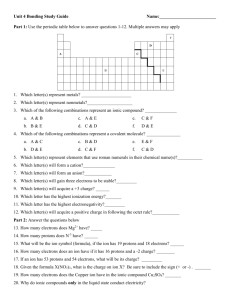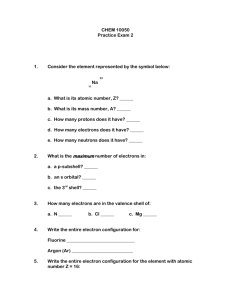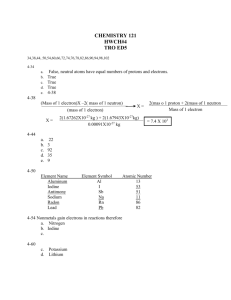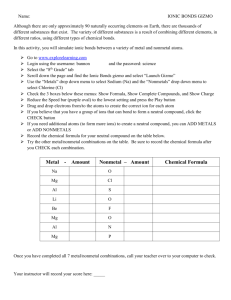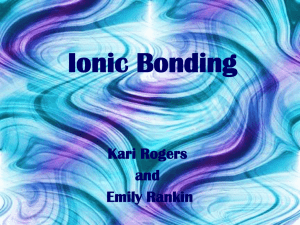Narration
advertisement
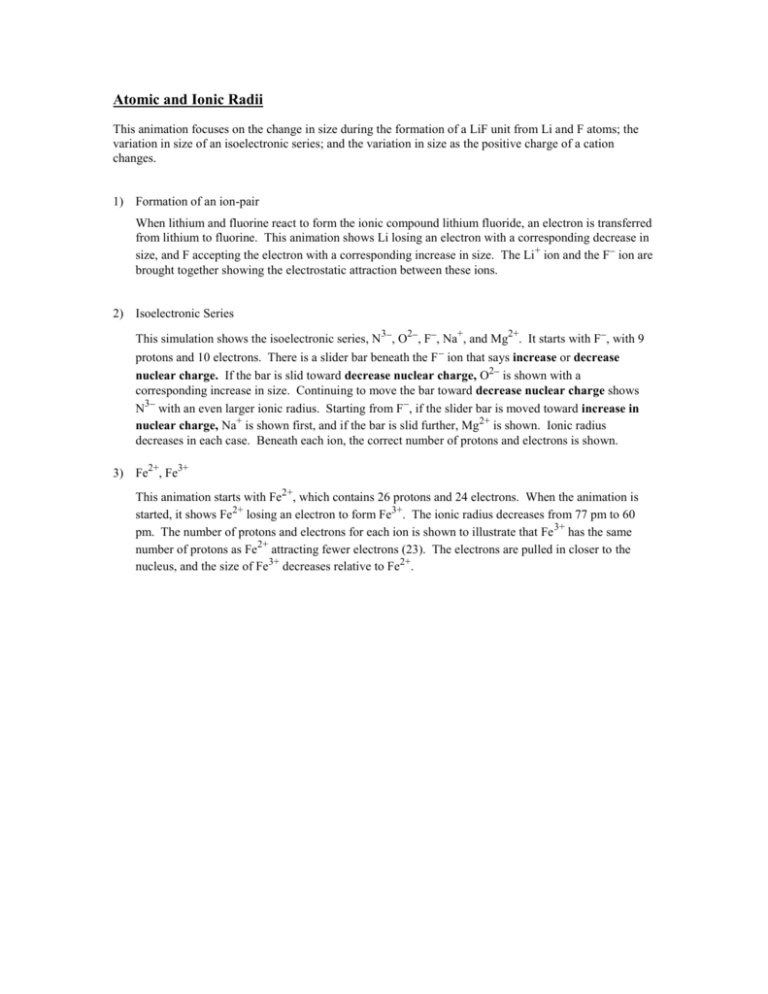
Atomic and Ionic Radii This animation focuses on the change in size during the formation of a LiF unit from Li and F atoms; the variation in size of an isoelectronic series; and the variation in size as the positive charge of a cation changes. 1) Formation of an ion-pair When lithium and fluorine react to form the ionic compound lithium fluoride, an electron is transferred from lithium to fluorine. This animation shows Li losing an electron with a corresponding decrease in size, and F accepting the electron with a corresponding increase in size. The Li+ ion and the F ion are brought together showing the electrostatic attraction between these ions. 2) Isoelectronic Series This simulation shows the isoelectronic series, N3, O2, F, Na+, and Mg2+. It starts with F, with 9 protons and 10 electrons. There is a slider bar beneath the F ion that says increase or decrease nuclear charge. If the bar is slid toward decrease nuclear charge, O2 is shown with a corresponding increase in size. Continuing to move the bar toward decrease nuclear charge shows N3 with an even larger ionic radius. Starting from F, if the slider bar is moved toward increase in nuclear charge, Na+ is shown first, and if the bar is slid further, Mg2+ is shown. Ionic radius decreases in each case. Beneath each ion, the correct number of protons and electrons is shown. 3) Fe2+, Fe3+ This animation starts with Fe2+, which contains 26 protons and 24 electrons. When the animation is started, it shows Fe2+ losing an electron to form Fe3+. The ionic radius decreases from 77 pm to 60 pm. The number of protons and electrons for each ion is shown to illustrate that Fe 3+ has the same number of protons as Fe2+ attracting fewer electrons (23). The electrons are pulled in closer to the nucleus, and the size of Fe3+ decreases relative to Fe2+.
